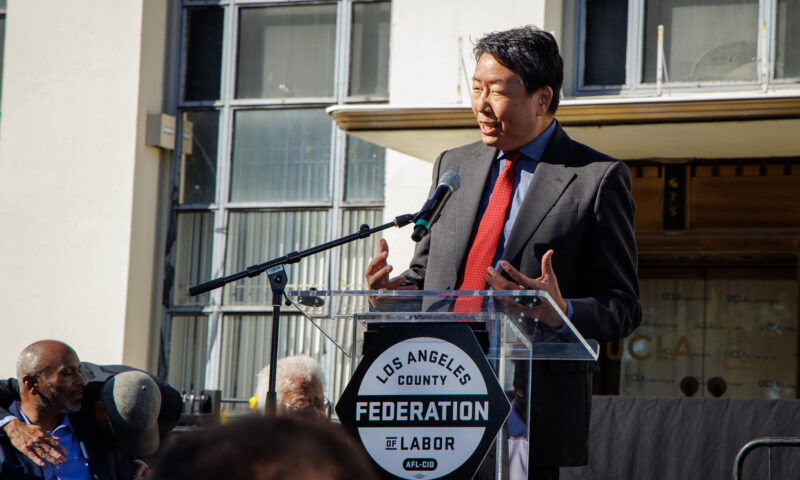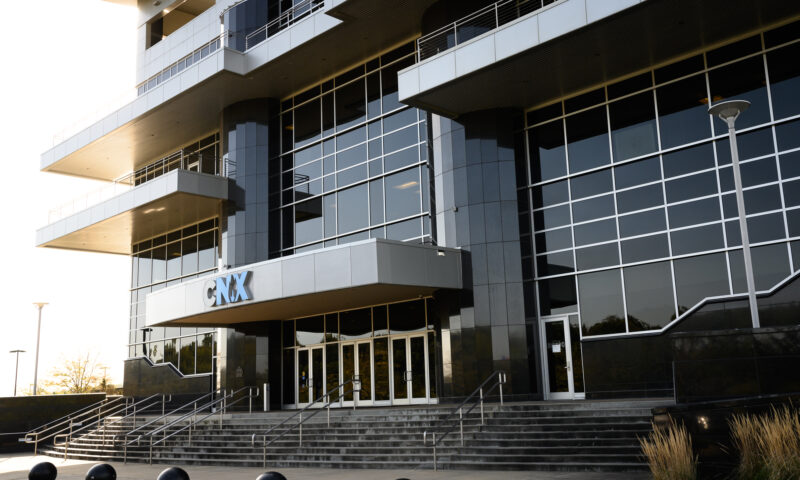For a state long considered a progressive political force, California’s record on desegregating its own public schools is abysmal. In fact, a new study says, intense school segregation by race and class in the state is worsening — and it’s happening faster than just about anywhere else in the country.
That startling reality check comes courtesy of a heavily researched report by the Civil Rights Project at UCLA. The authors found that over the past three decades, the proportion of intensely segregated schools in California — those with more than 90% students of color — has quadrupled to 44.5%. That’s nearly half of the state’s more than 10,000 public K-12 schools.
The finding doesn’t square with the state’s national image as a bastion of forward-thinking policies, and it may not represent how Californians think of themselves, said Ryan Pfleger, senior policy research analyst at the Civil Rights Project and a co-author of the report. But it is further evidence of a longstanding reality.
“There has definitely been a trend toward increasing segregation, both nationally and in California, for 30 or so years,” Pfleger said. “One significance [of the new report] is that California is now the state with the highest proportion of intensely segregated schools in the continental United States.”
On balance, the authors found, white and Asian students attend schools with better funding, more resources, higher graduation rates and greater readiness for college than do Black, Latino, Native American and multiracial students.
“When we have schools that are radically unequal in those regards, then we have a set of students with access to opportunities and a set that does not have that access,” Pfleger said. “It’s one of the reasons to really care about this kind of segregation.”
* * *
The benefits of diverse school populations, backed by rafts of research, include positive outcomes for all students in social, economic and academic ways — and the opposite, deeply segregated schools, leads to unequal learning rates, worse health outcomes, higher poverty rates and poorer long-term economic projections for those attending them.
Put simply, California kids on the wrong side of the segregation equation — those in schools with predominantly Black, Latino, Native American and multiracial populations, often in poorer communities — fare worse both in K-12 and long after. Segregated schools perpetuate economic gaps among races and ethnicities.
Yet California as a state hasn’t even attempted to address the issue recently. Instead, its public school system largely mirrors the demographic movement of the population itself, including the long-term decline in the Black population in historically Black areas like South Los Angeles. As many cities, suburbs and rural areas have become more stratified by race and class, so have the schools that lie within and around them.
The past 30 years have seen the Latino population in California grow dramatically as a percentage of the state’s total, and that’s reflected in school enrollment. The Civil Rights Project’s research found that between 1990 and 2022, white enrollment in public K-12 schools fell by 1 million, while Latino enrollment grew by 1.4 million. The state’s population increased by about 10 million people overall during that time.
Given those numbers, “Some might say that demography is destiny,” Pfleger said. “But that alone doesn’t explain the segregation, or why it varies [from school district to district] the way it does.”
Over that 32-year span, for example, the San Bernardino City Unified School District went from having no intensely segregated schools to having roughly 70 — more than 90% of its total number of schools. Every single one of Santa Ana Unified’s 50-plus schools have, since 2018, been categorized as intensely segregated.
Oakland’s school district, on the other hand, saw a slight decline in school segregation during the past few decades, making it an outlier.
Overall, though, the Civil Rights Project’s report says that the school trend “is toward more extreme racial isolation over time,” and it found 776 public schools within the state that in 2022 enrolled fewer than 1% white students. “In a very diverse society,” the authors wrote, “these are near apartheid levels of separation.”
* * *
California essentially gave up formal desegregation efforts in the 1980s, following the passage in 1979 of Proposition 1, which barred the use of busing to integrate classrooms. A decade later, a federal judge dismissed the final defendant in a case attempting to desegregate Los Angeles’ public schools, effectively thwarting the National Association for the Advancement of Colored People’s quarter-century effort on that front.
The years since then have seen a pronounced rise in two other forms of public education, magnet schools and charter schools. Many magnet schools were initially facilitators of integration, but a 2007 ruling by the U.S. Supreme Court that struck down race-conscious enrollment had a chilling effect on that process and caused many school districts to reconsider their policies.
Today, Pfleger and co-author Gary Orfield found, both magnet and charter schools “are becoming more racially isolated.” They reported that some magnet schools were conceived as a way to integrate school systems by creating specialized studies and arts programs that would appeal to a broad cross-section of students. But many of those have since shifted to primarily serving those who score high on standardized tests, the authors said. In the Los Angeles Unified School District alone, there are 56 magnet programs for “gifted” or “highly gifted” students, some with severely restrictive academic requirements for admission.
One thing hasn’t changed through the decades: the fallout for those who attend predominantly nonwhite schools. Graduation rates at the schools with the highest predominance of white and Asian students were nearly 10 percentage points higher than at schools with the highest percentage of Black and Latino students, the researchers found. That gap is even wider when it comes to the completion of “A-G” requirements, the courses that high schoolers must complete in order to attend a University of California or California State University school.
* * *
There’s no single integration plan that is going to level California’s increasingly stratified society. Rising rents in city neighborhoods have pushed many people of color and lower-income families out of many communities and into the suburbs, exurbs and rural areas of the state, all of which have seen their school segregation rates rise, the project’s authors say.
Still, “The inaction on the part of policymakers is striking,” Pfleger said. “There is actually a lot of opportunity to change this.”
One possibility is to bring back public transportation in the service of integration — enacting school transfer policies that allow students in poor or segregated schools to choose to go somewhere else, then providing transportation to make that happen. Another is to permit interdistrict transfers, so that students could voluntarily enroll in a less segregated school in a different district entirely.
Pfleger also favors plans that tie state funding of charter and magnet schools to the integration levels of those schools, which could kick-start desegregation in many of them. And a focus on building more affordable housing and enforcing fair housing laws could slow the exodus of people of color from communities in which they long lived.
The fact that there is little political momentum behind any of the ideas doesn’t render them invalid — just as ignoring the segregation of California’s public schools won’t make the problem go away. Thirty years on, it’s an issue with no resolution in sight.
Copyright 2025 Capital & Main


 Pain & ProfitNovember 3, 2025
Pain & ProfitNovember 3, 2025
 Column - State of InequalityNovember 6, 2025
Column - State of InequalityNovember 6, 2025
 Latest NewsOctober 29, 2025
Latest NewsOctober 29, 2025
 Column - State of InequalityOctober 23, 2025
Column - State of InequalityOctober 23, 2025
 Column - California UncoveredOctober 24, 2025
Column - California UncoveredOctober 24, 2025
 Latest NewsOctober 31, 2025
Latest NewsOctober 31, 2025
 The SlickNovember 5, 2025
The SlickNovember 5, 2025
 Latest NewsOctober 31, 2025
Latest NewsOctober 31, 2025

